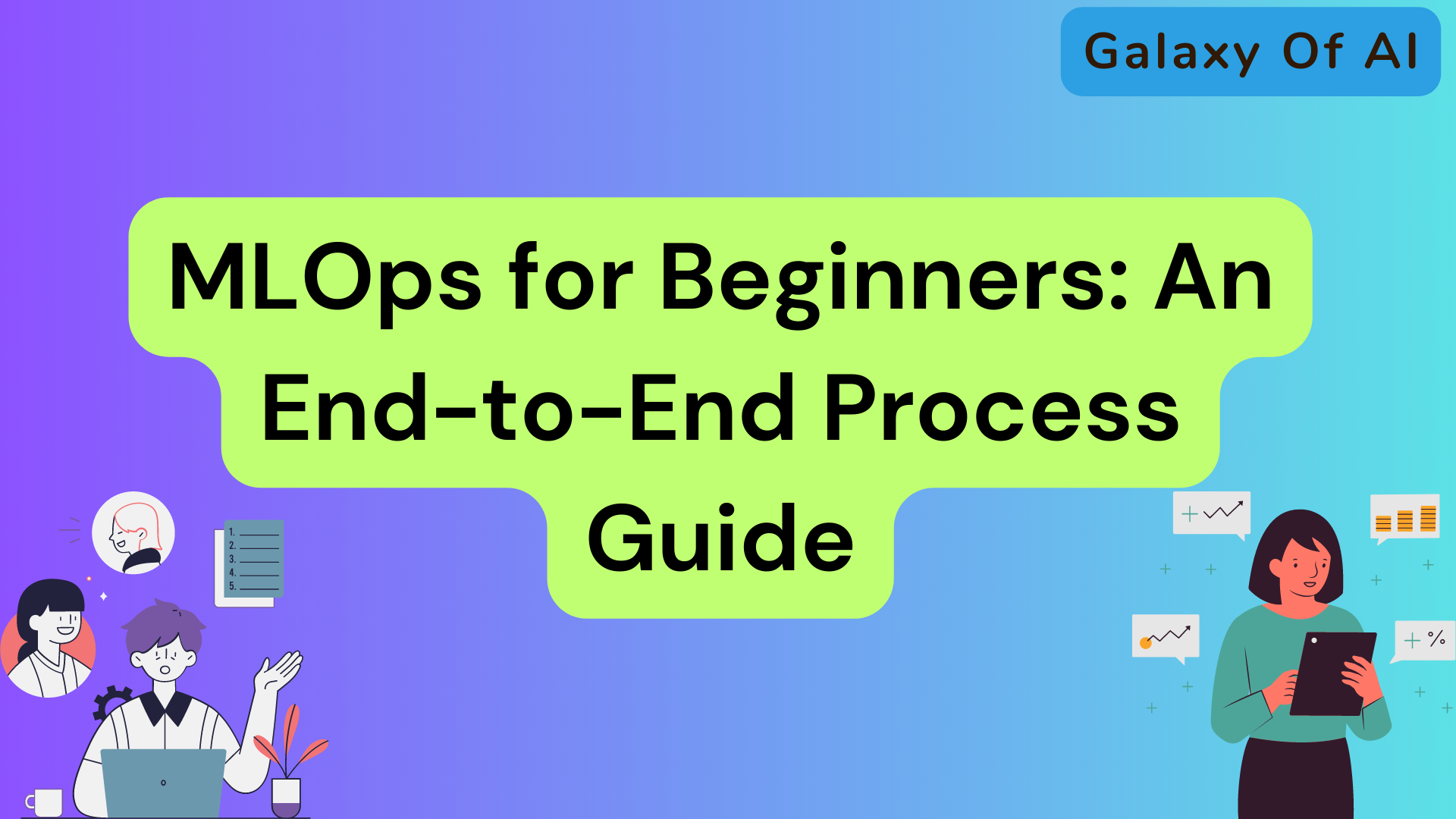Hello Learners…
Welcome to the blog…
Table Of Contents
- Introduction
- MLOps for Beginners: An End-to-End Process Guide
- Conclusion
- References
- FAQs
Introduction
In this post we discuss about MLOps for Beginners: An End-to-End Process Guide.Machine Learning Operations (MLOps) is an important part for machine learning engineer.
What is MLOps?
- MLOps, short for Machine Learning Operations, is a set of practices and principles that combine machine learning (ML) and operations to streamline the development, deployment, and maintenance of ML models in a systematic and efficient manner.
Why is MLOps important?
- MLOps is essential because it brings the principles of DevOps to the world of ML, enabling teams to manage ML models more effectively in production. It ensures collaboration, automation, and continuous monitoring, leading to improved model performance and faster deployment cycles.
What are the key components of MLOps?
- The key components of MLOps include version control for code and data, continuous integration and continuous deployment (CI/CD) pipelines, model deployment and monitoring, and collaboration tools for cross-functional teams.
MLOps for Beginners: An End-to-End Process Guide
Machine Learning Operations (MLOps) is an essential framework that enables the effective development, deployment, and management of machine learning models.
If you’re new to MLOps, here’s a step-by-step guide to understanding the end-to-end process.
1. Data Collection and Preparation:
- The journey begins with data collection with the identify the problem you want to solve and gather relevant data for your machine learning project.
- Ensure the data is clean, complete, and representative of the real-world scenarios you aim to address.
- Data preparation involves preprocessing, handling missing values, and encoding categorical variables.
2. Model Development:
- Experiment with different machine learning algorithms and techniques to find the best fit for your task.
- Start with simple models and gradually explore more complex ones. Use libraries like scikit-learn or TensorFlow to implement and evaluate your models.
3.Model Training:
- With a chosen model, it’s time to train it on your prepared data.
- Split your data into training and validation sets to assess the model’s performance. During training, the model learns from the data, adjusting its parameters to make accurate predictions.
4. Model Evaluation:
- Evaluate your trained model’s performance using various metrics such as accuracy, precision, recall, and F1-score.
- These measurements help you gauge how well your model is likely to perform in real-world scenarios and identify areas for improvement..
5. Model Deployment:
- After obtaining a satisfactory model, you’ll need to deploy it to make predictions on new data.
- Deploying a model could involve creating an API or integrating it into a web application. Containerization technologies like Docker are often used to package the model and its dependencies for easy deployment.
6. Model Monitoring:
- Once deployed, continuously monitor your model in the production environment.
- Keep an eye on its performance and look out for any unusual behavior.
- Monitoring helps detect issues like data drift or model degradation, prompting you to take corrective actions..
7. Model Maintenance and Updates:
- Machine learning models need regular updates to stay accurate and relevant.
- As new data becomes available, retrain the model periodically to keep it up-to-date.
- Version control helps manage changes and allows you to roll back if needed.
8. Collaboration and Version Control:
- Collaboration is key in MLOps.
- Work closely with data engineers, data scientists, and IT operations to ensure a smooth workflow. Utilize version control tools like Git to track changes, collaborate efficiently, and maintain the integrity of your codebase.
What are the benefits of implementing MLOps?
Implementing MLOps offers several benefits, including faster model deployment, better collaboration between teams, improved model performance, easier debugging, and better tracking of model changes.
Conclusion
MLOps for Beginners: An End-to-End Process Guide Embracing MLOps principles and enables beginners to navigate the end-to-end process of developing, deploying, and maintaining machine learning models successfully.
By following these steps, you can embark on your MLOps journey with confidence and build powerful AI solutions that drive value in various domains. Remember to start small, learn from experiments, and iterate to improve your models continuously.
Happy Learning And Keep Learning…
Thank You…
References
FAQs
To get started with MLOps, begin by understanding the basics of machine learning and DevOps. Familiarize yourself with tools like Git and Docker. Experiment with simple ML projects and gradually introduce automation and monitoring into your workflows.
Common challenges in MLOps include managing data versioning, dealing with model versioning, handling model drift, setting up scalable and robust infrastructure, and promoting a culture of collaboration between data scientists and operations teams.
Yes, MLOps principles can be applied to various ML projects, regardless of their size and complexity. Whether it’s a small research project or a large-scale production deployment, MLOps can help manage the development and deployment lifecycle effectively.
MLOps differs from traditional software development in its focus on managing the unique challenges of ML projects, such as data versioning, model drift, and retraining. It combines ML-specific tools and practices with standard DevOps approaches.
Some popular tools for MLOps include Git for version control, Jenkins or GitLab CI/CD for automation, Docker for containerization, Kubernetes for orchestration, and MLflow for model management.
Remember, MLOps is an evolving field, and staying up-to-date with the latest developments and best practices is essential for successful implementation.
